Top Rankings
Columbus School District ranks among the top 20% of public school district in Nebraska for:
Category
Attribute
Diversity
Most diverse schools (Top 1%)
Community Size
Largest student body (number of students) (Top 1%)
For the 2025 school year, there is 1 public middle school serving 1,207 students in Columbus School District. This district's average middle testing ranking is 3/10, which is in the bottom 50% of public middle schools in Nebraska.
Public Middle School in Columbus School District have an average math proficiency score of 36% (versus the Nebraska public middle school average of 44%), and reading proficiency score of 37% (versus the 44% statewide average).
Minority enrollment is 56% of the student body (majority Hispanic), which is more than the Nebraska public middle school average of 34% (majority Hispanic).
Overview
This School District
This State (NE)
# Schools
9 Schools
336 Schools
# Students
4,145 Students
80,801 Students
# Teachers
258 Teachers
6,586 Teachers
Student : Teacher Ratio
16:1
16:1
District Rank
Columbus School District, which is ranked within the bottom 50% of all 245 school districts in Nebraska (based off of combined math and reading proficiency testing data) for the 2021-2022 school year.
The school district's graduation rate of 84% has stayed relatively flat over five school years.
Overall District Rank
#203 out of 246 school districts
(Bottom 50%)
(Bottom 50%)
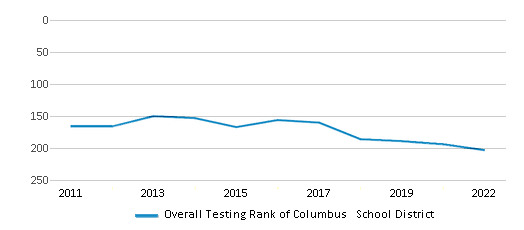
Math Test Scores (% Proficient)
38%
46%
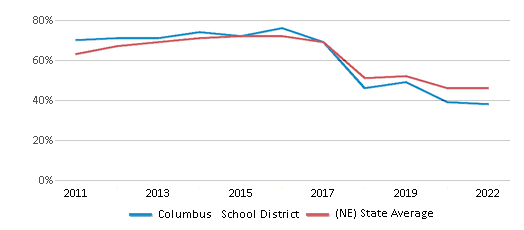
Reading/Language Arts Test Scores (% Proficient)
40%
47%
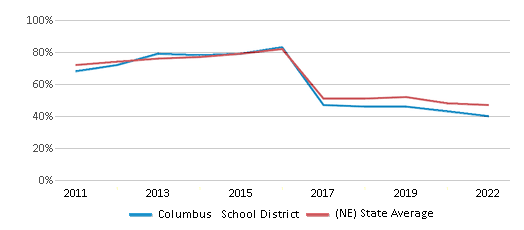
Science Test Scores (% Proficient)
59%
62%
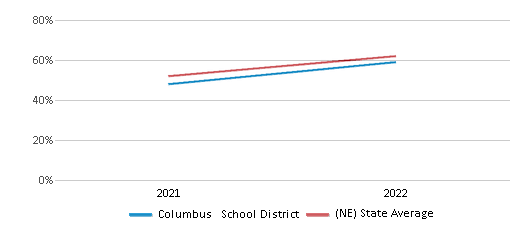
Graduation Rate
84%
87%
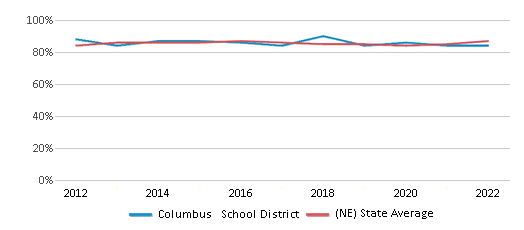
Students by Ethnicity:
Diversity Score
0.55
0.52
# American Indian Students
35 Students
1,431 Students
% American Indian Students
1%
2%
# Asian Students
31 Students
2,155 Students
% Asian Students
1%
3%
# Hispanic Students
2,090 Students
15,703 Students
% Hispanic Students
50%
19%
# Black Students
81 Students
4,374 Students
% Black Students
2%
5%
# White Students
1,836 Students
53,695 Students
% White Students
44%
67%
# Hawaiian Students
1 Student
133 Students
% Hawaiian Students
n/a
n/a
# Two or more races Students
71 Students
3,310 Students
% of Two or more races Students
2%
4%
Students by Grade:
# Students in PK Grade:
244
137
# Students in K Grade:
252
238
# Students in 1st Grade:
284
240
# Students in 2nd Grade:
275
276
# Students in 3rd Grade:
292
258
# Students in 4th Grade:
296
360
# Students in 5th Grade:
301
1,359
# Students in 6th Grade:
306
15,828
# Students in 7th Grade:
254
23,395
# Students in 8th Grade:
346
24,061
# Students in 9th Grade:
303
3,765
# Students in 10th Grade:
329
3,741
# Students in 11th Grade:
308
3,520
# Students in 12th Grade:
355
3,623
# Ungraded Students:
-
-
District Revenue and Spending
The revenue/student of $13,419 in this school district is less than the state median of $15,464. The school district revenue/student has stayed relatively flat over four school years.
The school district's spending/student of $12,192 is less than the state median of $16,776. The school district spending/student has stayed relatively flat over four school years.
Total Revenue
$56 MM
$5,080 MM
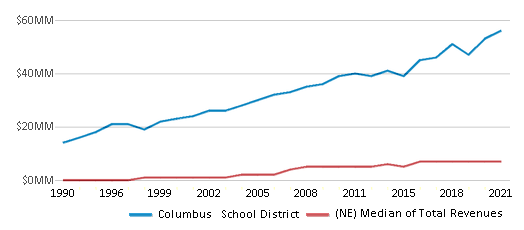
Spending
$51 MM
$5,511 MM
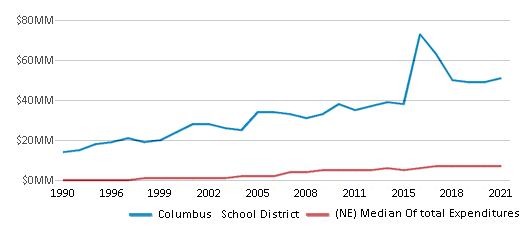
Revenue / Student
$13,419
$15,464
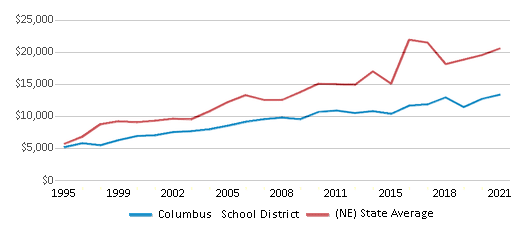
Spending / Student
$12,192
$16,776
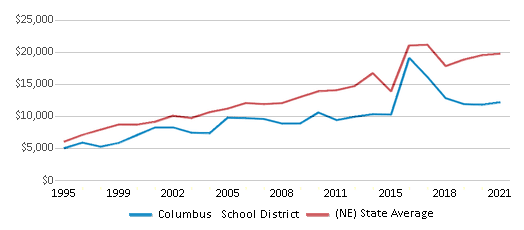
Best Columbus School District Public Middle Schools (2025)
School
(Math and Reading Proficiency)
(Math and Reading Proficiency)
Location
Grades
Students
Rank: #11.
Columbus Middle School
(Math: 36% | Reading: 37%)
Rank:
Rank:
3/
Bottom 50%10
2200 26th St
Columbus, NE 68602
(402) 563-7060
Columbus, NE 68602
(402) 563-7060
Grades: 5-8
| 1,207 students
Recent Articles

Year-Round Or Traditional Schedule?
Which is more appropriate for your child? A year-round attendance schedule or traditional schedule? We look at the pros and cons.

Why You Should Encourage Your Child to Join a Sports Team
Participating in team sports has a great many benefits for children, there is no doubt. In this article you will learn what those benefits are.

White Students are Now the Minority in U.S. Public Schools
Increasing birth rates among immigrant families from Asia and Central and South America, combined with lower birth rates among white families, means that for the first time in history, public school students in the United States are majority-minority. This shift in demographics poses difficulties for schools as they work to accommodate children of varying language abilities and socio-economic backgrounds.





